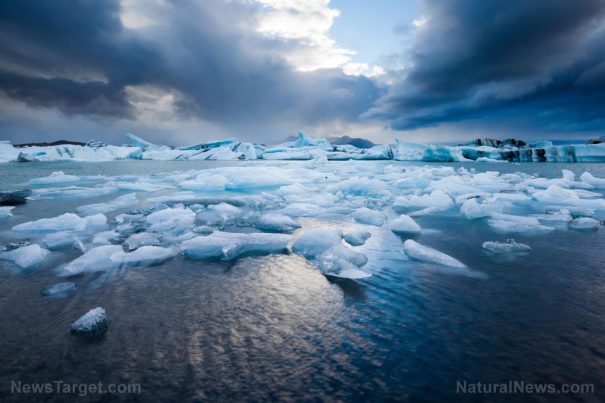Friday, December 18, 2020 by News Editors
A wealth of new research in glacier and sea ice extent show modern Iceland is 2-4°C colder than all of the last 8000 years except for a slightly colder late 19th century. Even the 1700s were warmer with less ice than today in and around Iceland.
(Article by Kenneth Richard republished from NoTricksZone.com)
A new study (Geirsdóttir et al., 2020) now affirms peak Holocene warmth at least “?3–4 °C above modern in Iceland” prevailed throughout much of the last 8000 years. Data from tree growth, glacier-induced soil erosion, algae productivity, sea ice biomarker proxies (IP25), and other climate indices affirm these conclusions.
Harning et al., 2020 report an overall 7°C Holocene cooling trend In Iceland’s surrounding sea surface temperatures (SST).
“In terms of foraminifera-reconstructed SST there is an overall trend of cooling throughout the last 8 ka from ~10 °C to ~3 °C.”
It is only in the last few centuries of the modern era that temperatures sharply plummeted to their lowest values of the last 10,000 years (Geirsdóttir et al., 2020).
“The coolest climate of the last 10 ka occurred in the late 1800s CE.”
Consequent to the peak cooling, glaciers and sea ice reached their maximum extents of the Holocene just 150 years ago.
While Iceland’s glaciers and North Shelf sea ice extent did partially recover in the first half of the 20th century, the ice extents are still beyond what they were in the 1700s and earlier.
There is nothing to indicate modern warmth or ice recession in and around Iceland is unprecedented or even unusual.
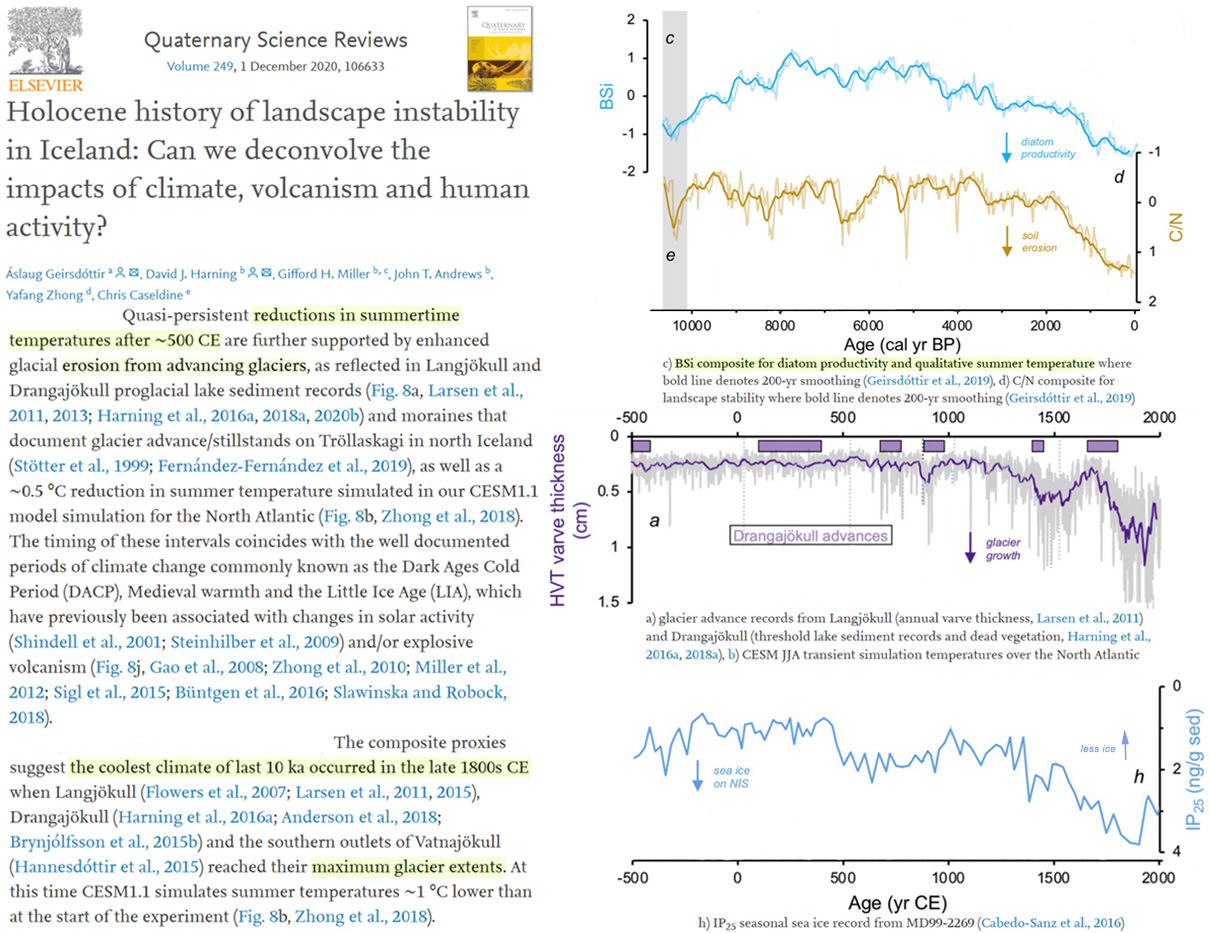
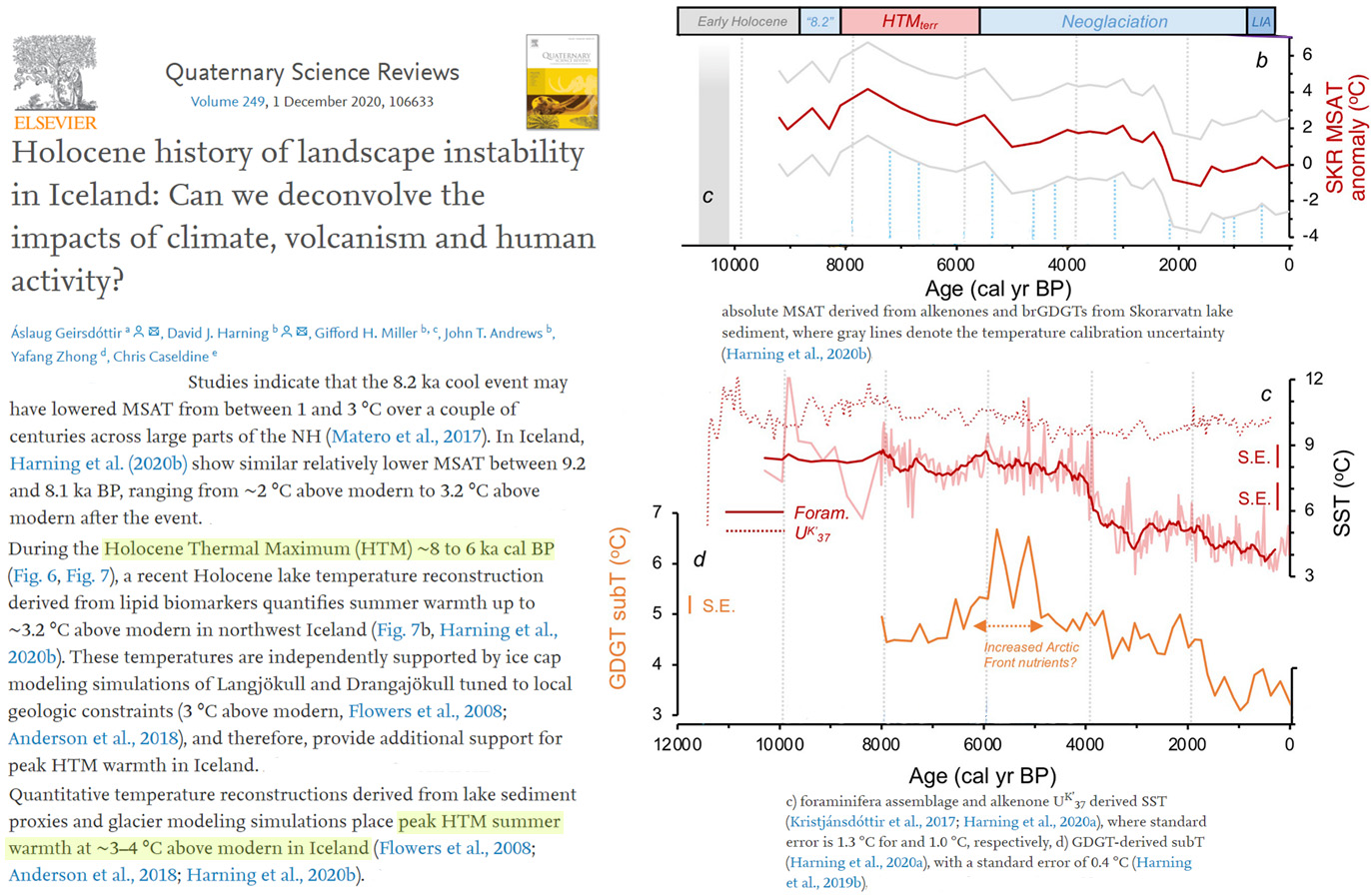
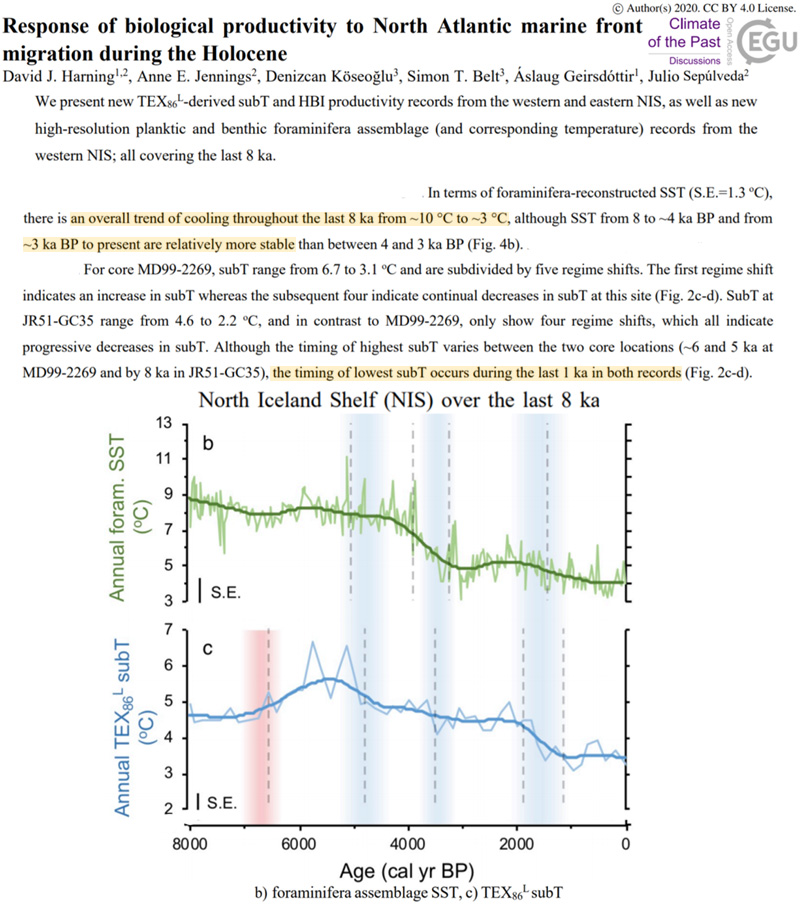
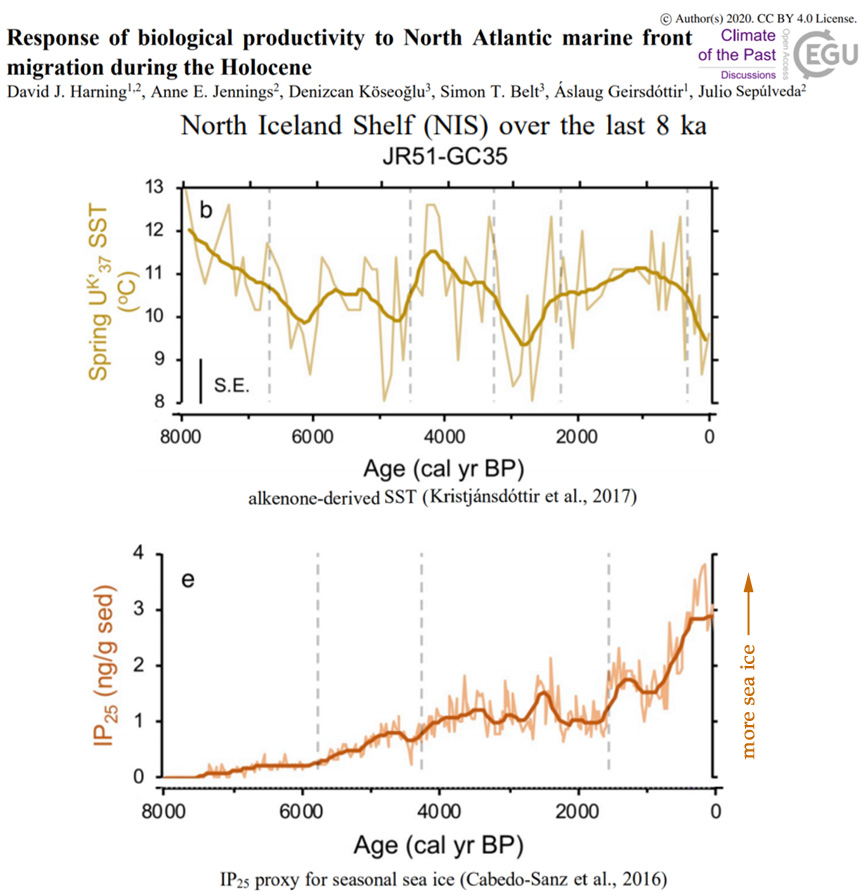
Read more at: NoTricksZone.com and ClimateScienceNews.com.


